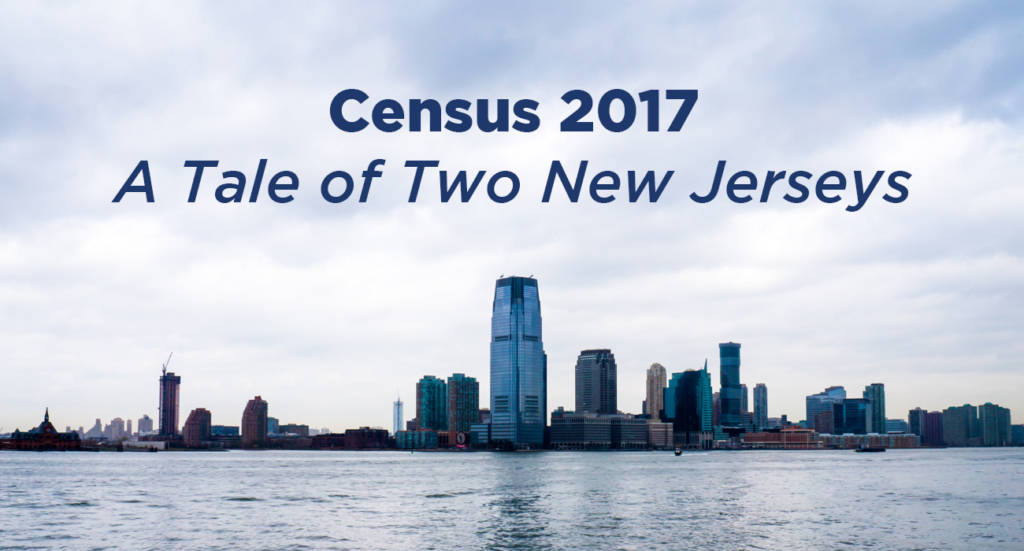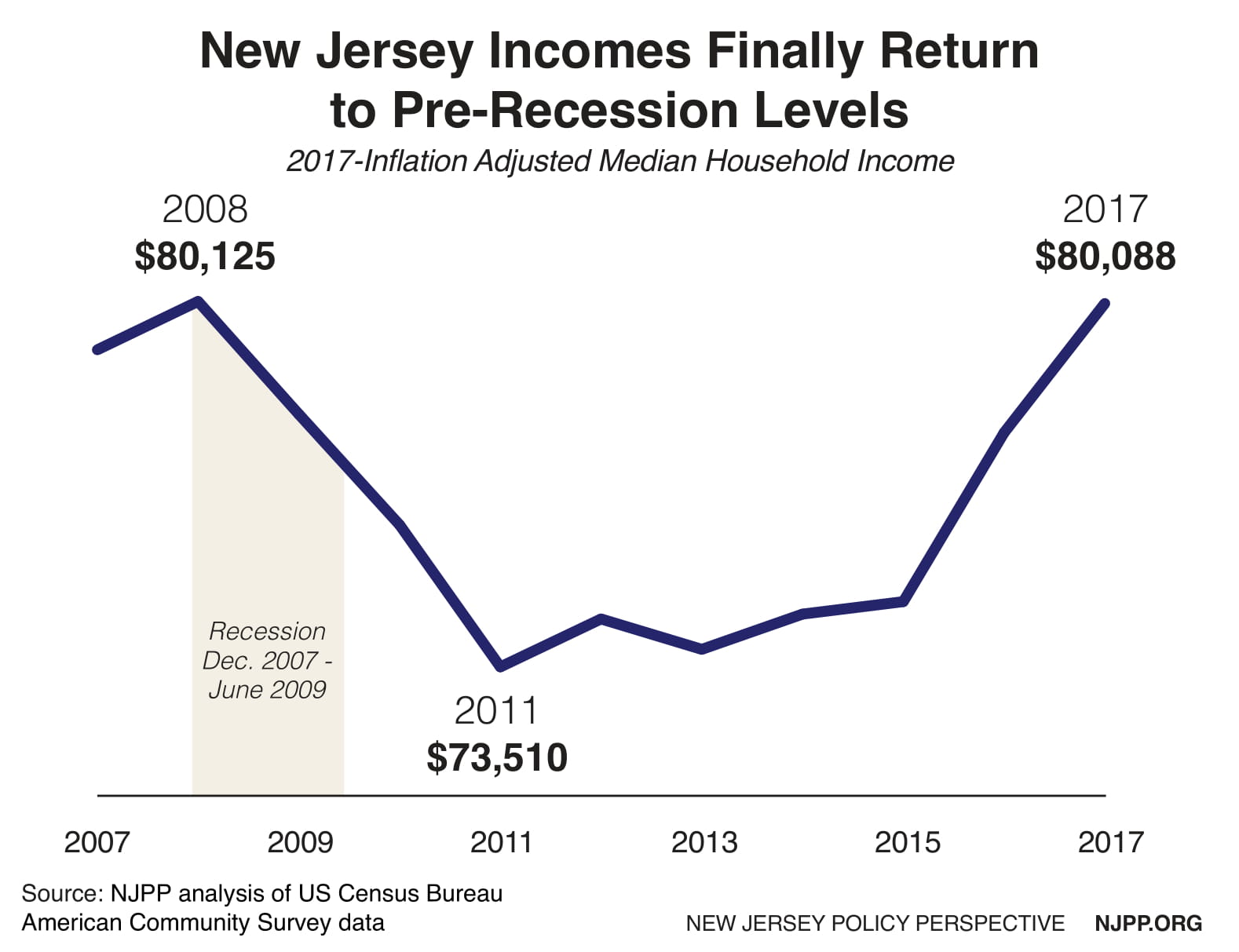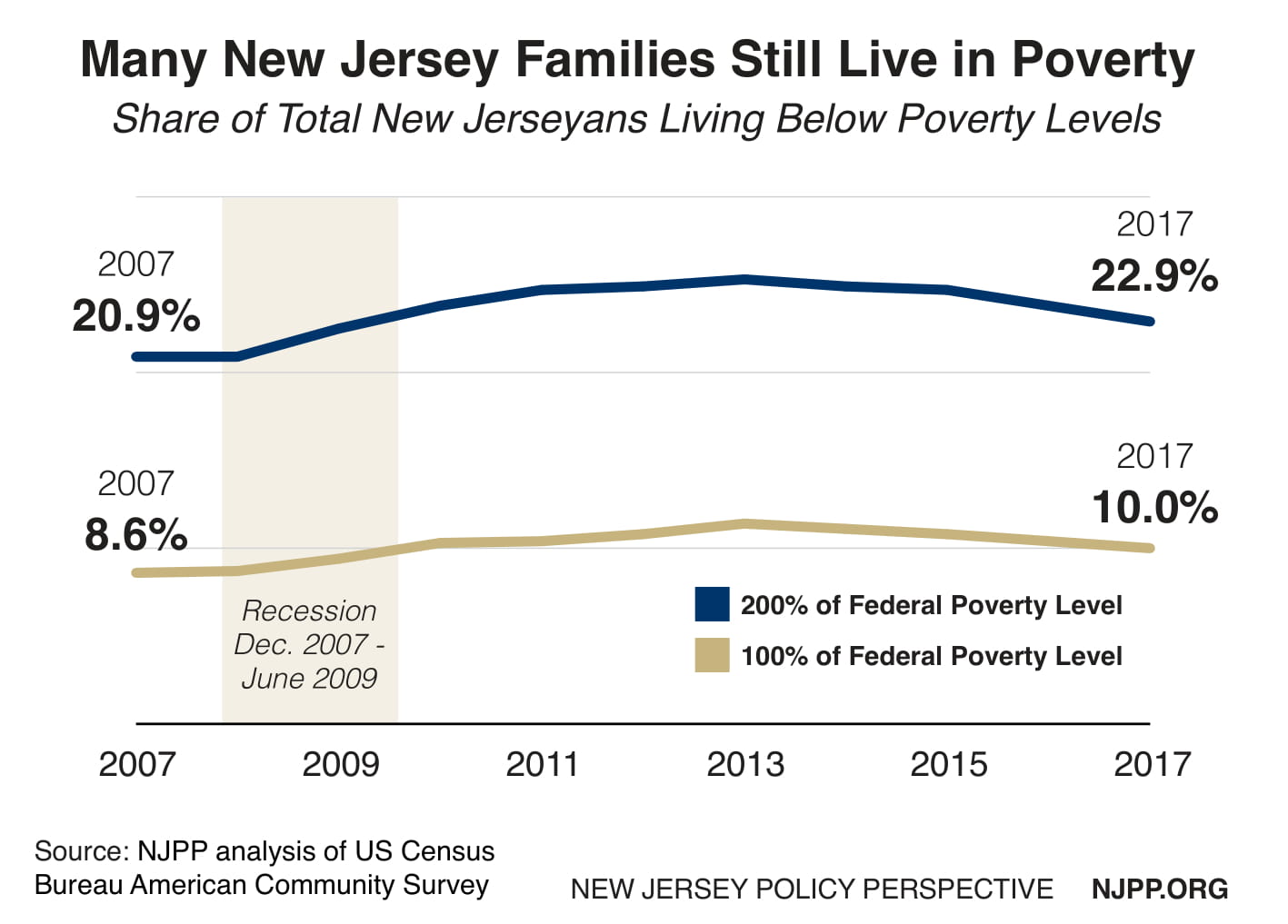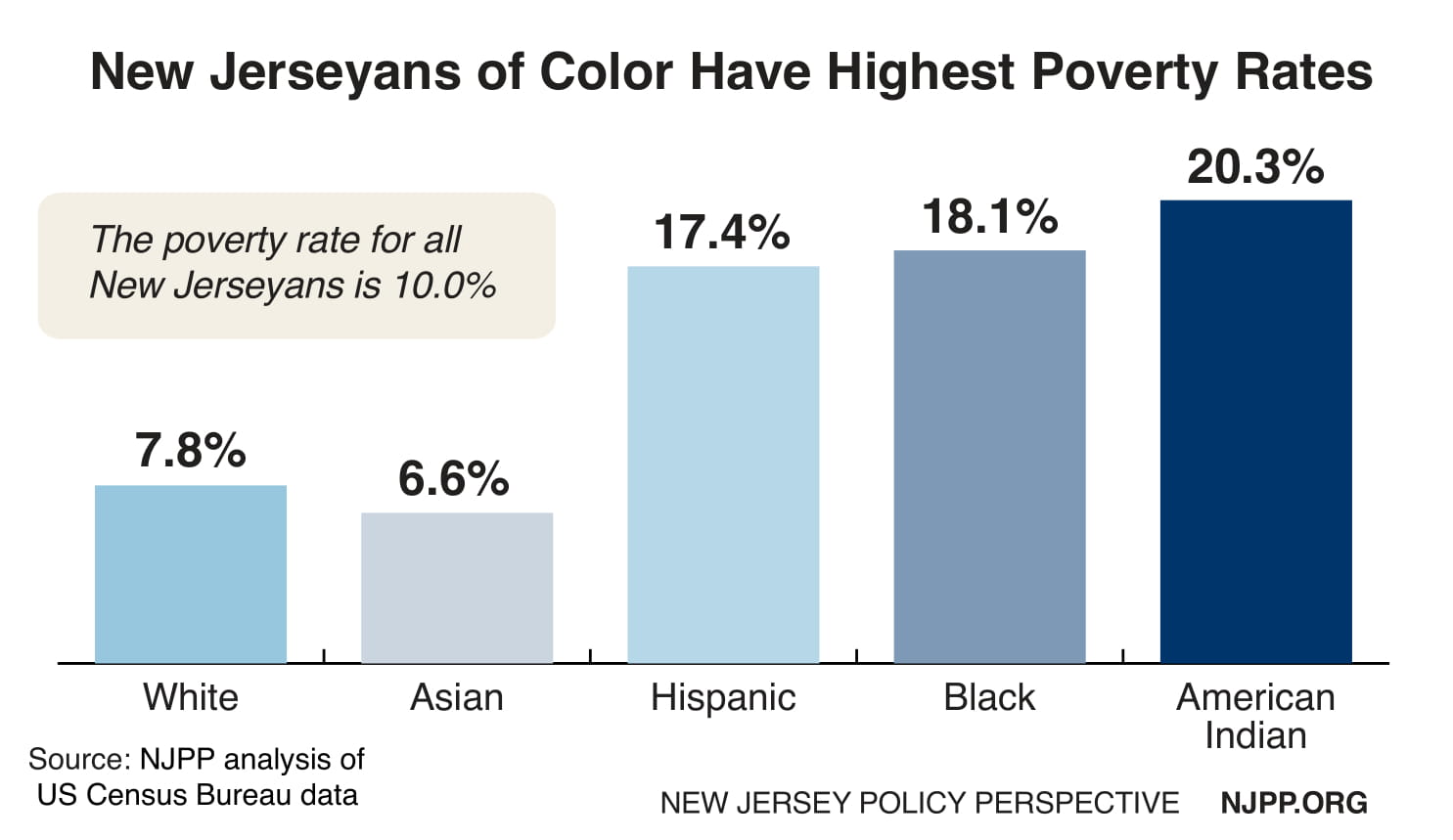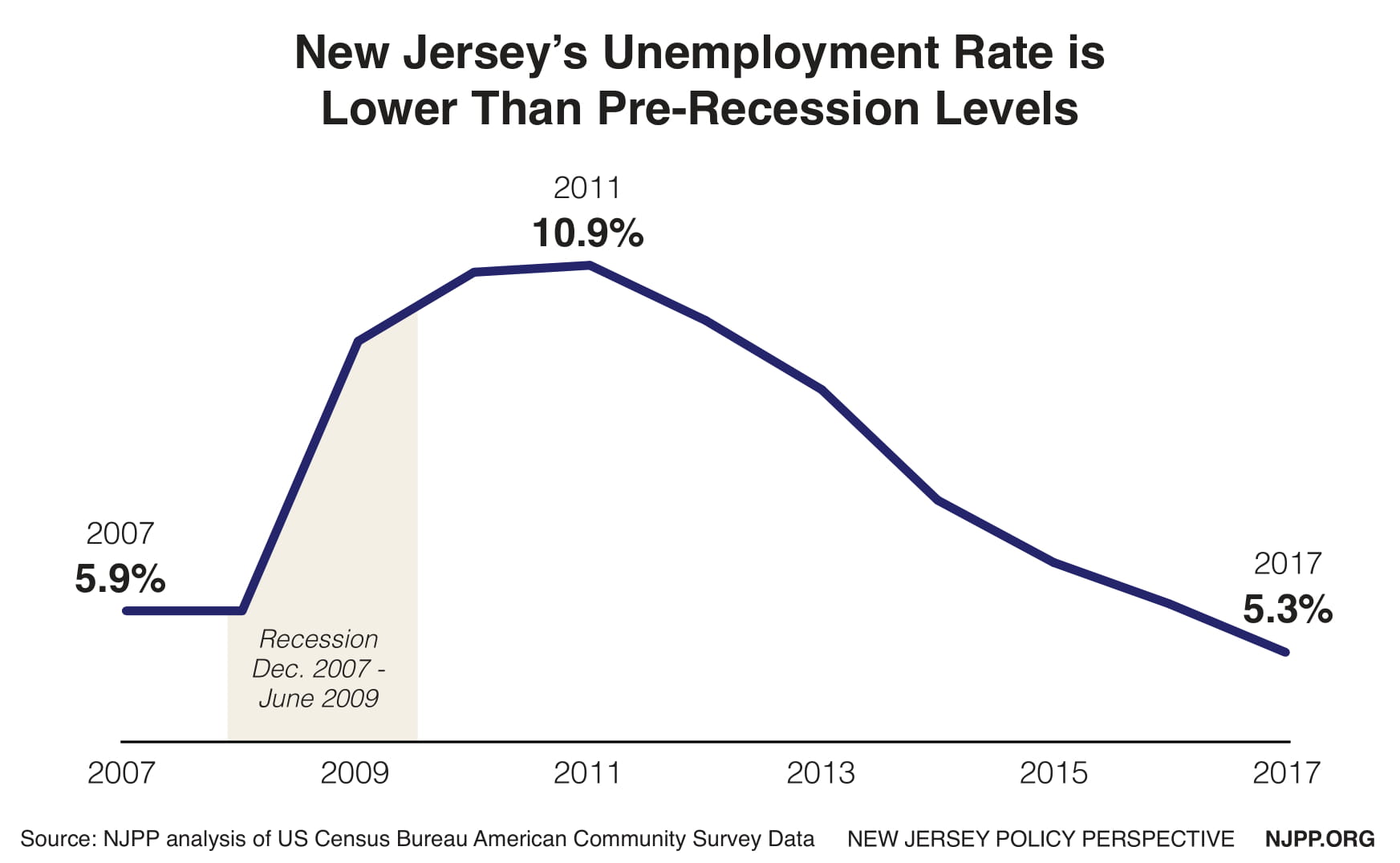It is no secret that the Garden State has been among the slowest states to recover from the Great Recession. Now, nearly a decade later, New Jersey remains a tale of two states as household incomes are on the rise while far too many families continue to live in poverty and struggle to make ends meet.
New data from the U.S. Census Bureau signals an improving economy with increases in employment and median household income to pre-recession levels. The poverty rate, meanwhile, remains stubbornly high, with one in ten New Jerseyans unable to afford basic necessities. Communities of color are more than twice as likely as Whites to struggle economically – living on less than $24,600 for a family of four – meaning that not all New Jersey families are sharing in the state’s economic gains.
In order to grow a stronger and more inclusive economy for us all, it’s imperative that lawmakers remove barriers to economic stability, such as raising the minimum wage for all workers and boosting public investments in affordable homes and transportation infrastructure. For New Jersey’s economy to truly rebound, all New Jerseyans must have access to the resources and investments that will enable them to participate in the state’s growth and prosperity.
Household Income
New Jersey’s median household income rose significantly in 2017, increasing by 3.0 percent to $80,088. This is a return to the state’s pre-recession median income level, which peaked at $80,125 in 2008. This rebound is a milestone for New Jersey, where median income bottomed out at $73,510 in 2011, but also serves as a stark reminder of how long it has taken New Jersey’s economy to recover.
While the increase in median household income is good news, the bad news is that these gains are not being equally shared among all residents. In 2017, median household income was $91,454 for White households, $50,395 for Black households, $54,482 for Hispanic or Latino households, $118,917 for asian households, and $51,027 for American Indian and Alaska Native households.
Poverty
New Jersey’s official poverty rate dropped from 10.4 percent in 2016 to 10.0 percent in 2017, but remains much higher than it did in 2007 when it was 8.6 percent. However, for a high-cost state like New Jersey, it is more appropriate to measure poverty here by looking at the 200% federal poverty level (FPL).
The official poverty rate – 100% FPL – registers at an annual income of $20,420 for a family of three and $24,600 for a family of four. In a high-cost state like New Jersey, that’s incredibly low and it makes no sense to limit real poverty to such a low level of income. Using the 200% FPL rate – which would be an annual income of nearly $50,000 for a family of four – is more appropriate. At that level, 22.9 percent of New Jerseyans were living in poverty in 2017. This is down from 23.8 percent last year but it also remains higher than the pre-recession rate of 20.9 percent in 2007.
Out of the nine million residents who call New Jersey home, 882,673 were living in poverty in 2017. Measuring poverty at 200% FPL, just over 2 million people were in poverty in 2017.
Communities of Color are Struggling the Most
In 2017, the poverty rate remains higher for every race and ethnic group in New Jersey than it was prior to the recession, and the rate is particularly high for New Jerseyans of color. While there has been a drop in the poverty rate for most between 2016 and 2017, two communities saw an increase. For Black New Jerseyans, the poverty rate increased from 17.4 percent to 18.1 percent, and for American Indians and Alaska Natives the poverty rate increased from 19.1 percent to 20.3 percent.
Child poverty dropped slightly, from 14.6 percent to 13.9 percent, but remains higher than in 2007 when it was 11.6 percent.
Poverty among women continues to remain higher than poverty among men. Poverty for women dropped to 10.9 percent in 2017 from 11.4 percent and poverty for men dropped to 9.0 percent in 2017 from 9.4 percent. Both rates are higher than they were prior to the Great Recession, where in 2007 women’s poverty was 9.7 percent and men’s poverty was 7.3 percent.
Employment
The unemployment rate continues to improve after hitting a peak of 10.9 percent in 2011. New Jersey’s unemployment rate is down to 5.3 percent in 2017. This is welcomed news as more New Jerseyans are participating in the labor force and finding work is incredibly important for the state’s economy. However, for the unemployment rate to drop while the poverty rate remains higher than pre-recession levels is indicative of a wage problem, especially for workers in low-wage jobs.
The 2017 Census shows that while the state has made important strides in a number of critical areas, economic security is out of reach for far too many New Jerseyans. Poverty remains higher than pre-recession levels, with rates for women and communities of color being particularly high. And despite an increase in household income across the board, households of color continue to earn less than their White neighbors.
To rectify these problems, lawmakers must prioritize policies that benefit low-income workers, communities of color, and impoverished New Jerseyans who struggle every day. Proven solutions include raising the minimum wage for $15 for all workers, expanding the Earned Income Tax Credit (EITC), implementing strong wage theft protections, and boosting investments in transportation, education, and affordable homes. Until we can ensure all New Jerseyans are able to safely and reliably make ends meet, our economy will continue to have trouble growing our economy in a healthy manner.
Policies that are proven to grow wages, improve benefits, and help more residents to afford their needs will provide the boost that our economy desperately needs and spread prosperity to every corner of the state.

